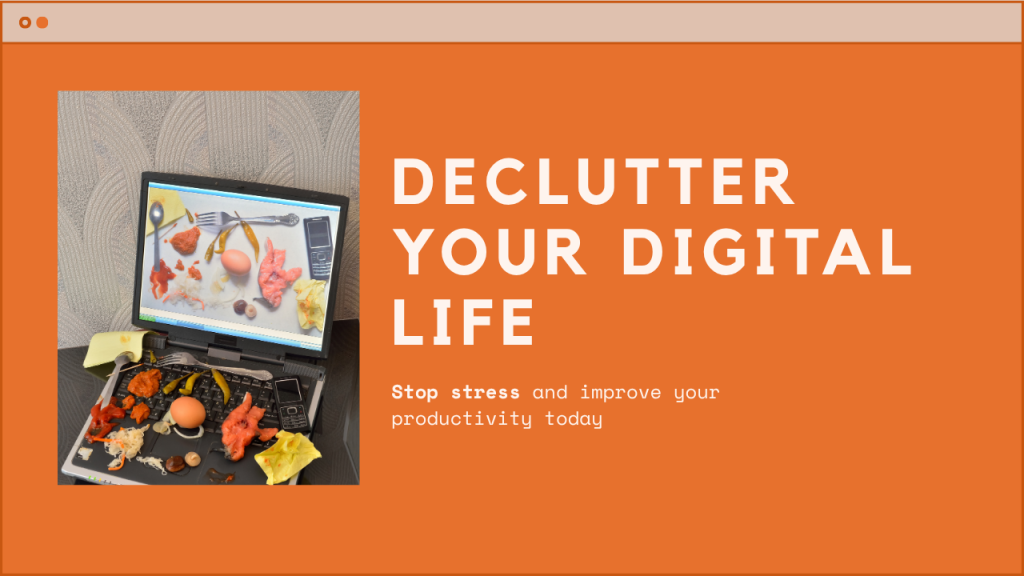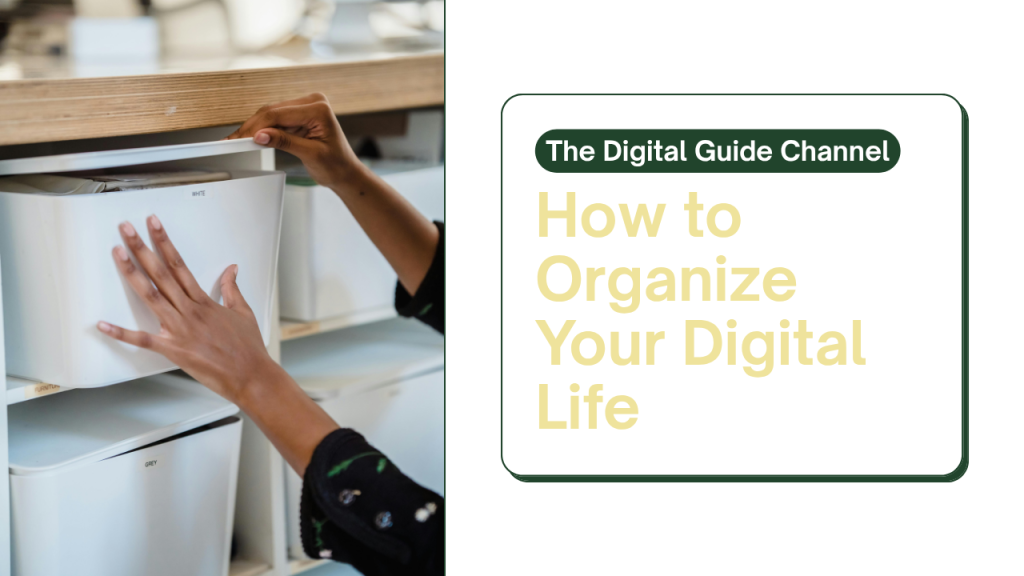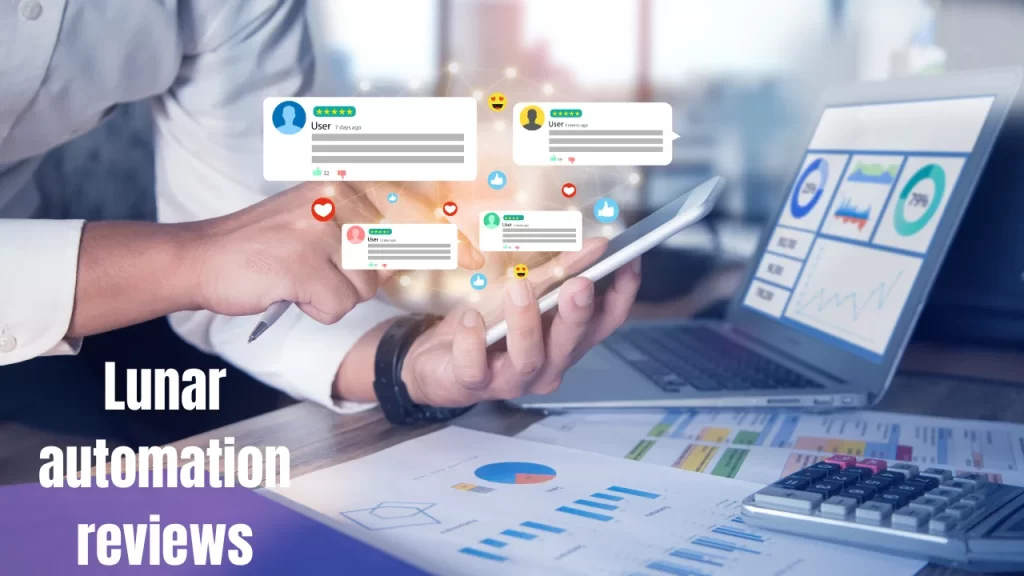Introduction: Why You Need to Organize Your Digital Life
Our lives today are more digital than ever. From the thousands of photos on your phone, to endless emails in your inbox, to countless files scattered across devices and clouds — digital clutter is the new normal.
But just like a messy house, a cluttered digital life drains your time, productivity, and even mental health. According to a study published in the Journal of Neuroscience, clutter competes for your attention, reduces your ability to focus, and increases stress.
The good news? A well-organized digital ecosystem saves you hours, makes you more efficient, and even gives you peace of mind. In this ultimate guide, you’ll learn how to organize your digital life step by step, so you can reclaim your time, protect your data, and create a smoother daily experience.

The Costs of a Cluttered Digital Life
Before we get practical, it helps to understand why it’s worth your effort.
Wasted Time and Energy
According to a McKinsey report, the average professional spends over 28% of the workweek managing email alone. Add in searching for files, resetting forgotten passwords, and sorting digital mess — and it’s no wonder you often feel overwhelmed.
Increased Stress
Digital clutter creates background noise for your brain. Just seeing a messy desktop or 5,000 unread emails can make you anxious.
Higher Security Risks
Disorganized devices often mean outdated software, weak or duplicate passwords, and files scattered across multiple unsecured platforms — a goldmine for cybercriminals.
The Ultimate Digital Decluttering Plan: 8 Areas to Tackle
Let’s break this down into manageable areas. Here’s your roadmap to organizing your digital life.
1. Clean Up Your Computer Files
Organize Documents
- Create a simple, intuitive folder system. For most people: pgsqlCopyEdit
/Documents /Work /Personal /Finance /Health /Receipts - Avoid deep, overly complex nesting. You should find anything within 3 clicks.
Delete Duplicates and Old Files
- Use tools like Duplicate Cleaner (Windows) or Gemini 2 (Mac) to find unnecessary copies.
- Archive old projects to an external drive or cloud storage.
Make Use of Search and Tags
On Mac, leverage Finder tags. On Windows, you can use file properties and libraries. Tag key documents for faster retrieval.
2. Tame Your Desktop
Your desktop isn’t meant to be permanent storage. Too many icons slow down your system and clutter your mind.
Action steps:
- Move files to your main document folders.
- Keep only temporary files or active projects on your desktop, and set a weekly reminder to clean it.
3. Declutter and Organize Your Email
Email is the #1 digital stressor for most people. Here’s how to fix it.
Unsubscribe Ruthlessly
Use tools like Unroll.Me or manually unsubscribe from newsletters you never read.
Use Folders or Labels
- In Gmail: set up labels like Finance, Work Projects, Family.
- In Outlook: create folders and use rules to sort emails automatically.
Try Inbox Zero (Or Close To It)
Archive anything older than 90 days that you’ll realistically never handle. You can still search for it later.
Limit Notifications
Turn off email pop-ups on your computer and phone. Instead, check emails at set times — like twice a day.
4. Organize Your Photos and Videos
Your camera roll is probably packed with thousands of images. Here’s how to make sense of them.
Delete First
Go through and delete duplicates, blurry shots, and screenshots you no longer need.
Sort by Album or Year
Most phones and cloud services let you create albums. At minimum, organize by year.
Use a Reliable Cloud Backup
Options like Google Photos, iCloud, or Amazon Photos ensure you never lose precious memories.
5. Manage Passwords the Smart Way
Weak or repeated passwords are a top security risk.
Use a Password Manager
- Try LastPass, 1Password, or Bitwarden to securely store and generate unique passwords for each account.
- You only need to remember one master password.
Update Weak or Duplicate Passwords
Start with your most critical accounts (email, banking, social media). Your password manager can often audit and flag weak ones.
6. Streamline Your Apps and Software
Review Apps Regularly
Delete unused apps from your phone and computer. They clutter your system and can pose privacy risks.
Keep Only the Essentials on Your Home Screen
Group apps into folders like Work, Social, Finance, Health. This reduces visual clutter.
Update Software
Outdated apps are vulnerable to hacking. Enable automatic updates wherever possible.
7. Get Control of Your Browser
Clean Up Tabs and Bookmarks
- Use extensions like OneTab to quickly save open tabs.
- Organize bookmarks into clear folders like Learning, Work Tools, Inspiration.
Clear Cookies and Cache
Do this monthly to speed up browsing and protect privacy.
8. Back Everything Up (Properly)
Imagine losing your entire digital life overnight — photos, important documents, passwords. It happens. Avoid it by following the 3-2-1 rule:
- 3 copies: primary + 2 backups
- 2 different media: e.g., external hard drive + cloud
- 1 offsite: like Google Drive or Dropbox
How to Maintain Your Organized Digital Life
Once you’ve decluttered, the next challenge is staying organized. Here’s how.
Set a Weekly Digital Cleanup
- Clear downloads and desktop files.
- Review emails and archive what you’re done with.
- Delete unused screenshots and temp files.
Use a Digital To-Do or Project Manager
Apps like Todoist, Notion, or Trello keep your life organized across all devices.
Review Security Quarterly
- Change important passwords.
- Check for software updates.
- Audit what third-party apps have access to your Google or Facebook accounts.

Extra Tips for Advanced Digital Organization
If you want to take it to pro level:
Use Naming Conventions
E.g., 2025-07 Resume.docx or Invoices_2025_Q3.pdf — easier to search later.
Master Your Search Tools
Learn advanced search functions for Windows (Ctrl+F, kind:=document, date:>1/1/2025) and macOS Spotlight.
Automate
- Automate file sorting with tools like Hazel (Mac).
- Use Zapier or IFTTT to automatically save email attachments to cloud folders.
FAQs on Organizing Your Digital Life
Q: How often should I clean my digital files?
Ideally, a mini-cleanup weekly and a deeper one each quarter.
Q: What’s the safest way to back up sensitive files?
Use encrypted drives (like VeraCrypt) for local storage plus a reputable cloud service with two-factor authentication.
Q: Is a password manager really safe?
Yes — it’s far safer than reusing passwords or storing them in a note. Just choose a strong master password and enable 2FA.
Q: What if I feel overwhelmed by the amount of clutter?
Start with one category — maybe just your desktop, or just your email. Small wins build momentum.
Conclusion: A Clean Digital Life is a Calm, Productive Life
Just like organizing your home makes life smoother, an orderly digital environment:
Saves time searching for files
Reduces stress and mental load
Protects your valuable data and identity
Remember: you don’t have to tackle everything in one day. Choose one area to start. Over weeks, your devices — and your mind — will feel lighter, clearer, and ready to focus on what truly matters.



